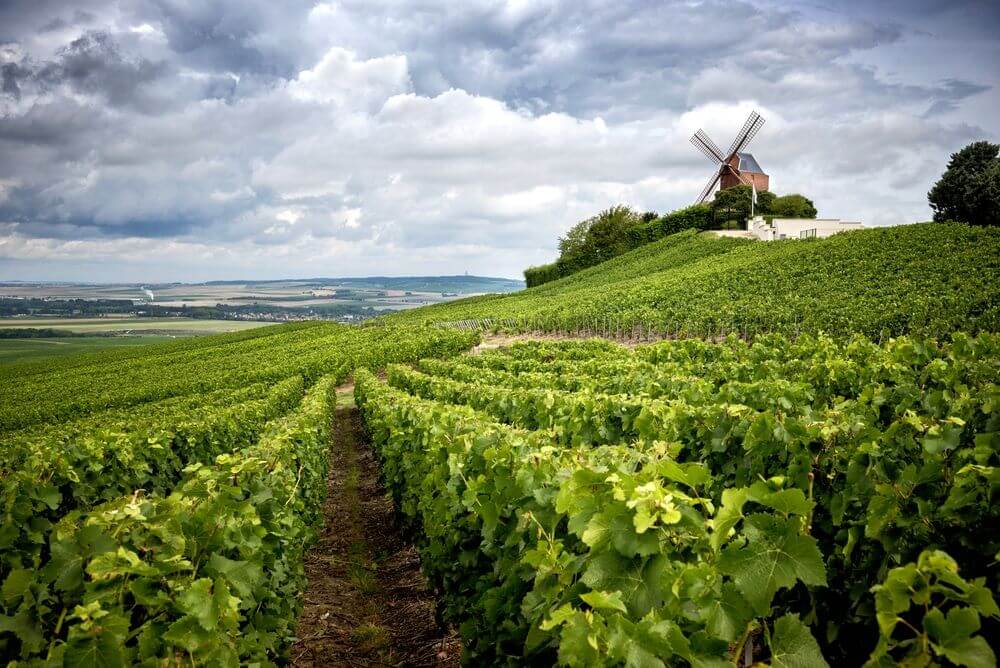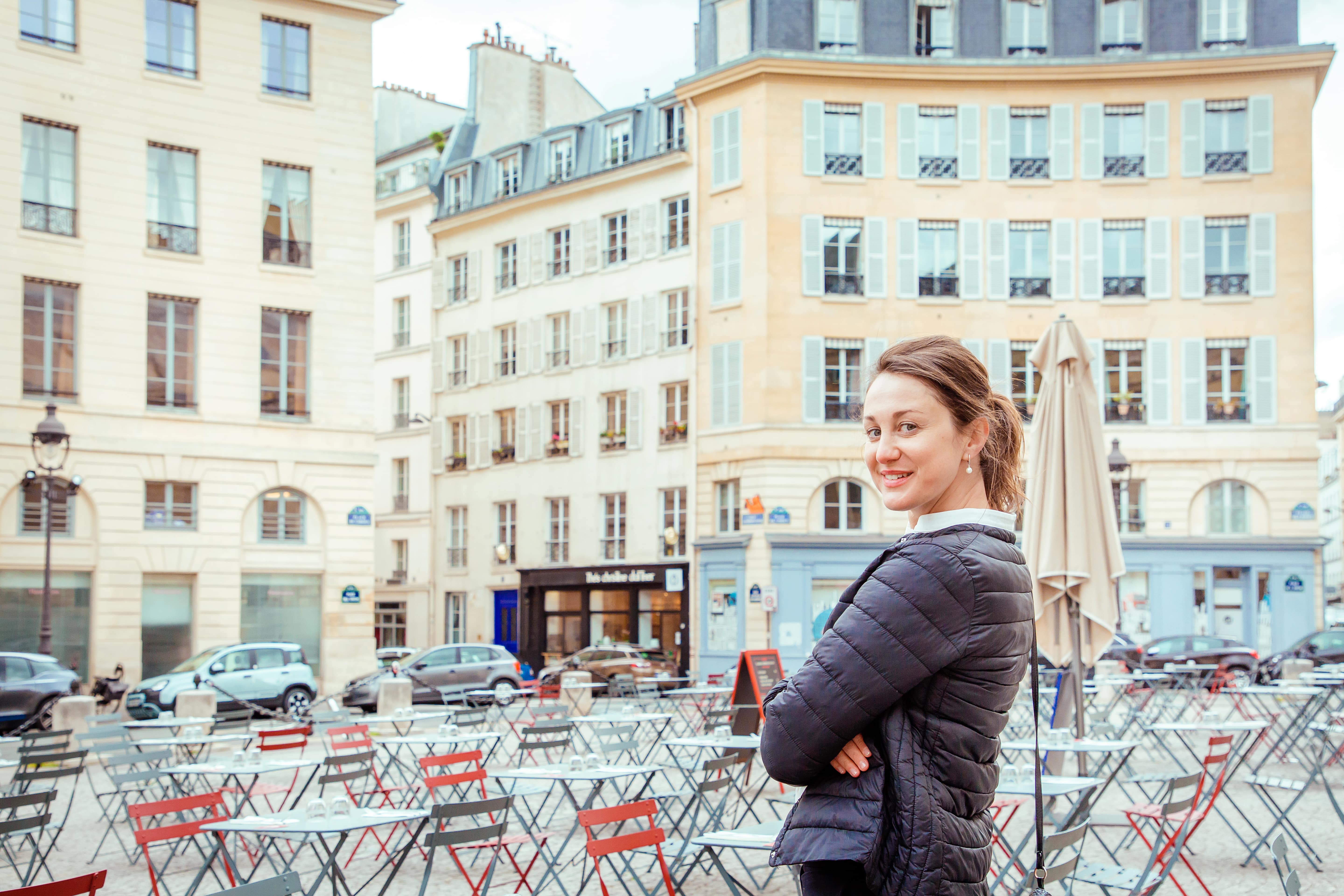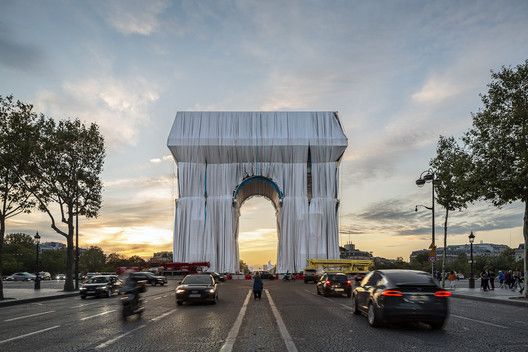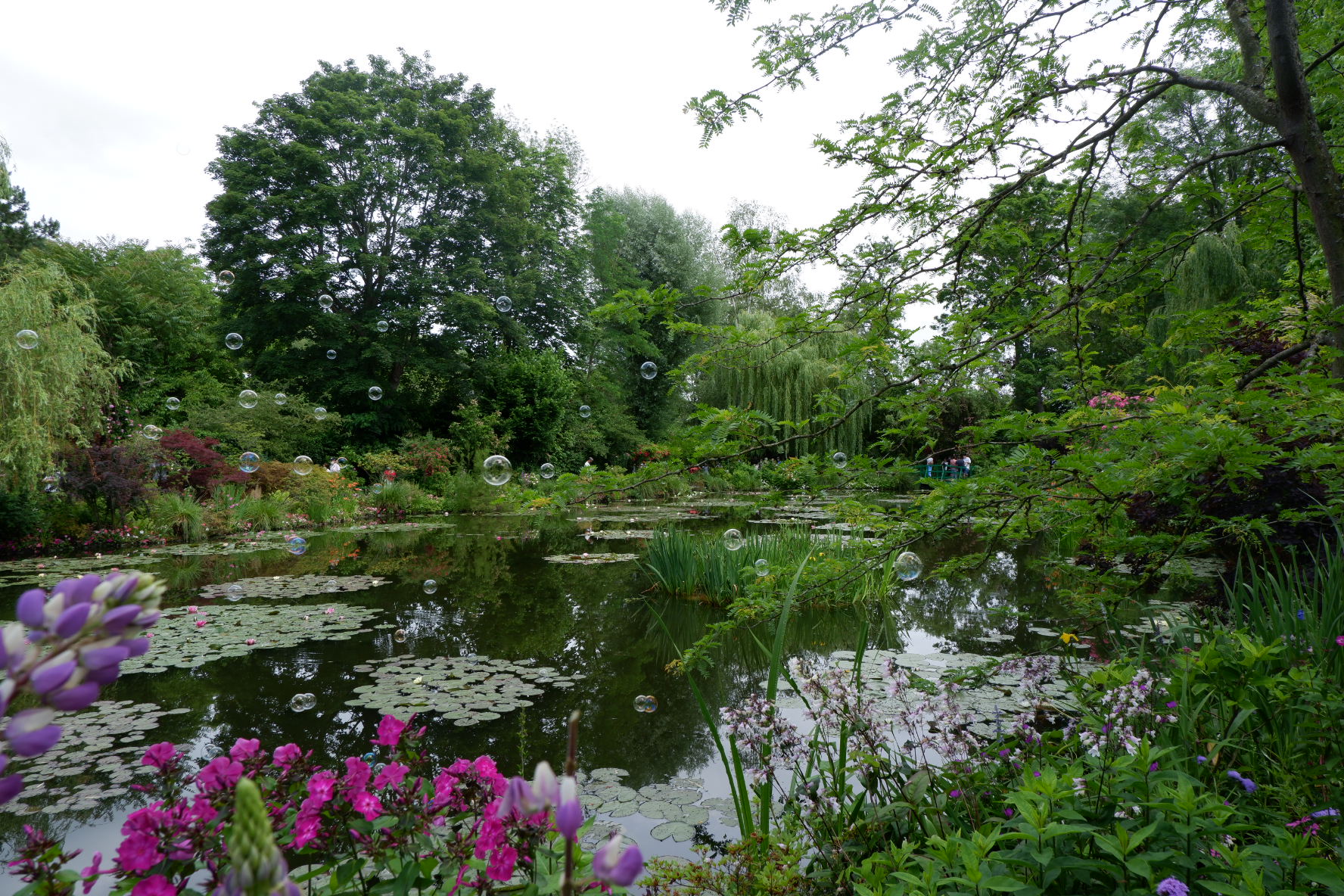L’Art de vivre
à la française
à la française
L’Art de vivre
à la française
Sparkling story, part 2

As it was promised in part one of the “sparkling story”, in part 2 we’ll find out more about the origin of champagne and the secrets of its creation.
So who was, in the end, the lucky inventor of this famous drink?
You will be probably surprised but the origin of champagne stays still a mystery.
Different sources place it around the year 1695. For long time paternity was granted to certain Dom Perignon (1639-1615) - the famous cellar master from Hautvillers Abbey. At the same time, no testimony of Dom Perignon's great achievement was never mentioned by his biographer.
It is interesting to know that at the beginning and for a long time, the whole process of champagne making was quite a spontaneous doing. Today’s magic formula had no exact numbers and proportions. Because of no precise dosage, the foam failed or, worse still caused the explosion of bottles. It took a century of experiments and technique refinements before it all started to work for making foam, eliminating the deposit, corking, and using a wire cage to keep the cork still.
I propose you now to reveal some secrets of champagne production.
So here are the most important of them.
Meticulously mastered soil.
The originality of the vineyard comes from its soil which is mainly limestone. It ensures good drainage and induces the specific minerality of the wines.
The champagne appellation area begins 150 km east of Paris and covers 34,000 ha spread over 5 departments: La Marne, L'Aube, Haute-Marne, Aisne, and Seine-et-Marne. In that area mainly 3 varieties of raisins are cultivated: Chardonnay (28%) Pinot noir (39%) and Pinot Meunier (33%)
The art of juice extracting.
If the chardonnay is white, the pinots are black skin raisins with a white juice. This particularity demands the harvest be done carefully by hands, in small crates. The grape bunches are brought as quickly as possible to the presses to extract the delicacy of that white juice without it being colored. It is one of the secret keys to the unique character of champagnes.
The art of blending.
As I have already mentioned in part 1 of the story, the harvests in the Champagne region vary considerably from year to year. It is by blending, that man turned these variations of nature to his own advantage, because the multitude of wines is rich in complementarities and contrasts. The cellar master or winemaker will play on the grape varieties but also on the “cru” and the years, even on the different fractions of the pressing. The assembly of it all makes it possible to create the unique style of each champagne house that they seek to reproduce the years after. Luckily today we’ve got the simple formula of champagne success:
Here it is : 1 fermentation +1 fermentation = bubbles
How exactly it works?
Champagne produces not one, but two alcoholic fermentations.
The first transforms the grape juice into classic white wine. Then a new fermentation starts, this time in the bottle. The carbon dioxide produced by fermentation is thus kept trapped in the wine. It will not escape until the final opening of the cap, by that forming the famous bubbles.
Breeding.
The maturation of champagne can be compared with that of cheese. Its character will be much different at 6, 9, or 18 months of maturing. The thing is that champagne develops a whole palette of its aromas with the aging. The regulations impose a minimum of 15 months of aging for a brut without a year and 3 years for becoming a “cru”. The breeding plays a crucial role in the quality and the prize of champagne.
A cellar master proposes his product to the public the very moment it is ready for consummation. Therefore there is no need to keep the bottles for many years in your cellar after buying them: the work has already been done. Good to know!
Here’re some curious facts about champagne for you to surprise your family or friends with.
1. The famous champagne foam. Where it comes from?
The second fermentation which gives to champagne its effervescent character is called "foaming". The process of its appearance is slow, going on at constant temperature, in the darkness of the Champagne cellars.
2. Le muselet (the wire hood holding the cork in a champagne bottle)
Is it really an important element in the bottle?
Certainly, it is! The pressure in a bottle of champagne is around 6 bars, more than in a car tire! The cork would never remain inserted into the neck without the wire cap – a small wire cage that keeps it securely attached to the neck of the bottle.
3. Sabering or sablage?
The sabering had appeared as an important ritual in honor of the Napoleonic soldiers. It consisted of opening a bottle of champagne by decapitating it with a saber to celebrate an important victory! The French word “sablage” of champagne is more peaceful indeed, it means drinking a glass of it “d’un seul coup” – all at once, on some important occasion and often in abundance.
4. Bubbles.
Did you know that there are more than a million bubbles in a 10 cl champagne flute served at 8 °C? Their size and number depend on multiple parameters, such as the presence of dust and scratches in the glass or even the lipstick of madam!
And the last but not the least , it is good to know that France and Paris, in particular, is reach in various champagne bars, where the degustation of really good examples of it is possible and so welcomed. So don’t hesitate to visit the gourmet itineraries that include this pleasant experience. That’s a real adventure, don’t miss it!
La versione in Italiano.
L'arte di vivere alla francese!
La storia scintillante, parte 2.
Come è stato promesso nella parte 1 della "storia scintillante", nella parte 2 scopriremo di più sull'origine dello champagne e sui segreti più importanti della sua creazione.
Quindi chi è stato il scopritore fortunato di questo famoso drink?
Probabilmente rimarrai sorpreso, ma l'origine dello champagne rimane sempre un mistero.Diverse fonti lo collocano intorno all'anno 1695. Per lungo tempo la paternità fu concessa ad un certo Dom Perignon (1639-1615) - il famoso maestro di cantina dell'Abbazia di Hautvillers. Allo stesso tempo, nessuna testimonianza del grande successo di Dom Perignon non fu mai menzionata dal suo biografo.
È interessante a saperlo che all'inizio e per molto tempo, l'intero processo di produzione dello champagne è stato piuttosto spontaneo. La formula magica, che funziona oggi non ha avuto dei numeri e proporzioni esatti a quel tempo. A causa d’un dosaggio non preciso, la schiuma non appariva, e peggio ancora, il processo spesso causava l'esplosione delle bottiglie. Ci sono voluti un secolo di esperimenti e perfezionamenti della tecnica prima che tutto iniziasse a funzionare per produrre la schiuma, eliminare il deposito, tappare le bottiglie e utilizzare una gabbia metallica per mantenere fermo quel tappo.
Ti propongo ora di rivelare alcuni segreti della produzione di champagne.
Sono: Il terreno meticolosamente controllato.
L'originalità del vigneto proviene dal suo terreno che è principalmente calcareo. Quel fatto assicura un buon drenaggio e induce la mineralità specifica dei vini.
L'area di denominazione dello champagne inizia a 150 km a est di Parigi e copre 34.000 ettari distribuiti su 5 dipartimenti: La Marne, L'Aube, Haute-Marne, Aisne e Seine-et-Marne. In quella zona vengono coltivate principalmente 3 varietà di uvetta: Chardonnay (28%) Pinot nero (39%) e Pinot Meunier (33%)
L'arte dell'estrazione del succo.
Se lo chardonnay è bianco, i pinot sono uvetta dalla pelle nera con un succo bianco. Questa particolarità richiede che il raccolto venga effettuato con cura a mano in piccole cassette. I grappoli vengono portati il più rapidamente possibile alle presse per estrarre la delicatezza di quel succo bianco senza che sia colora il resto. Quella è una delle chiavi segrete del carattere unico di champagne.
L'arte del mescolamento.
Come ho già scritto nella parte 1 della storia scintillante, i raccolti nella regione dello Champagne variano considerevolmente di anno in anno. È attraverso la fusione che l'uomo ha trasformato queste variazioni della natura a proprio vantaggio, perché la moltitudine di vini è ricca di complementarità e contrasti. Un produttore del vino giocherà sul "cru" e sugli anni, anche sulle diverse frazioni della pigiatura. L’insieme di tutto rende possibile la creazione dello stile unico di ogni casa di champagne che loro cercano di riprodurre ogni anno.
Fortunatamente oggi abbiamo ottenuto quel semplice formula del successo dello champagne:
1 fermentazione +1 fermentazione = bolle
Sembra d’essere facile, ma non è affatto così. Come funziona esattamente?
Lo champagne produce non una, ma invece due fermentazioni alcoliche.
Il primo trasforma il succo d'uva in classico vino bianco. Poi si inizia una nuova fermentazione, questa volta in bottiglia. L'anidride carbonica prodotta dalla fermentazione viene quindi mantenuta intrappolata nel vino. Non sfuggirà fino all'apertura finale del cappuccio, formando le famose bolle.
L’allevamento.
La maturazione dello champagne può essere paragonata a quella del formaggio. Il suo carattere sarà molto diverso a 6, 9 o 18 mesi. Il fatto è che lo champagne sviluppa un'intera gamma dei suoi aromi con l'invecchiamento. Il regolamento impone un minimo di 15 mesi di invecchiamento per un brut senza un anno e 3 anni per diventare un "cru". L'allevamento svolge un ruolo fondamentale nella qualità e nel prezzo dello champagne.
Il vinaiolo propone il suo prodotto al pubblico nel momento stesso in cui quello è pronto per essere consumato. Pertanto non è necessario conservare le bottiglie per molti anni in cantina dopo averle acquistate: il lavoro è già stato svolto. Bene a saperlo!
Ed ecco alcuni fatti curiosi sullo champagne per sorprendere la tua famiglia o gli amici.
1. La famosa schiuma di champagne. Da dove viene?
La seconda fermentazione che conferisce allo champagne il suo carattere effervescente si chiama "schiumatura". Il processo della sua apparizione è lento, prosegue ad un certa temperatura, nell'oscurità delle cantine di Champagne.
2. Le muselet ( la cappa che regge il tappo in una bottiglia di champagne)
È davvero un elemento così importante della bottiglia?
Certamente, lo è! La pressione in una bottiglia di champagne è di circa 6 bar, più che in una gomma del auto! Il tappo non rimarrebbe mai inserito nel collo senza quella piccola gabbia di filo che lo tiene attaccato.
3. Le sabrage o sablage?
“Le sabrage” ero apparso come un rituale importante in onore dei soldati napoleonici. Consisteva nell'aprire una bottiglia di champagne decapitandola con una sciabola per celebrare un'importante vittoria certamente! La parola francese "sablage" di champagne è più pacifica, significa berne un bicchiere "d’un seul coup" - tutto in una volta, in qualche occasione importante e spesso in abbondanza.
4. Le bollicine.
Sapevi che ci sono più di un milione di bolle in un “flauto”di champagne da 10 cl servito a 8 ° C? Le loro dimensioni e il numero dipendono da più parametri, come la presenza di polvere e graffi nel vetro o persino il rossetto della signora che lo beve!
L’ultima cosa a dire che in Francia e Parigi, in particolare, ci sono vari champagne bar, dove la degustazione di ottimi esempi è possibile e benvenuta. Non esitate a visitare gli itinerari gastronomici che includono tralaltro anche questa piacevole esperienza. È una avventura indimenticabile, da non perdere!
- Tags:
- Champagne
- French champagne






